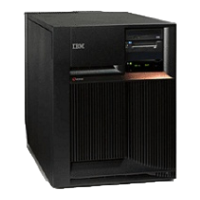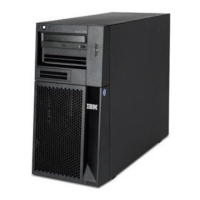Note: Use F4 to change the WRKPRB parameters to select and sort on specific problem log entries
that match the problem. Also, F11 displays the dates and times the problems were logged by the
system.
Was an entry that relates to the problem found?
Note: If the WRKPRB function was not available answer NO.
v Yes: Continue with the next step.
v No: Go to “Handle problems for non-critical resources” on page 11.
This
ends the procedure.
2. Select the problem entry by moving the cursor to the problem entry option field and entering option 8
to work with the problem.
Is Analyze Problem (option 1) available on the Work with Problem display?
v No: Perform the following:
a. Return to the initial problem log display (F12).
b. Select the problem entry by moving the cursor to the problem entry option field and selecting the
option to display details.
c. Select the function key to display possible causes.
Note: If this function key is not available, use the customer reported symptom string for
customer perceived information about this problem. Then, go to “Use the product activity log” on
page 9.
d. Use the list of possible causes as the FRU list and go to step 5 (See page 10).
v
Yes: Run Analyze Problem (option 1) from the Work with Problem display.
Notes:
a. For SRCs starting with 6112 or 9337, use the SRC and go to the System reference code list.
b. If the message on the display directs you to use SST (System Service Tools), go to
“COMM-PIP1” on page 103.
Was the problem corrected by the analysis procedure?
– No: Continue with the next step.
– Yes: This ends the procedure.
3.
Did problem analysis send you to another entry point in the service information?
v No: Continue with the next step.
v Yes: Go to the entry point indicated by problem analysis.
This
ends the procedure.
4. Was the problem isolated to a list of failing items?
v Yes: Continue with the next step.
v No: Go to “Handle problems for non-critical resources” on page 11.
This
ends the procedure.
5. Exchange the failing items one at a time until the problem is repaired.
Notes:
a. For failing items, see “Failing items” on page 249, and symbolic FRUs, see Symbolic FRUs.
b. When exchanging FRUs, go to the Remove and replace procedures. If you are exchanging a disk
unit, go to the Recovery procedures.
c. After exchanging an item, go to Verify the repair.
Has the problem been resolved?
v No: Contact your next level of support.
This
ends the procedure.
v Yes: This ends the procedure.
10 iSeries: iSeries Server 270, 800, 810, 820, 825, 830, 840, 870, 890, SB2, and SB3 Hardware Problem Analysis and Isolation
